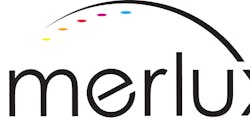US patent number 6,815,724, issued on November 9, 2004, includes the addition of sensors and controllers that actively and intelligently manage temperature and current of LED lighting systems.
An example would be where a micro-controller is used to integrate temperature and power sensors, memory, and decision capability, in order to maintain LED systems of any size within pre-defined parameters to ensure optimal performance of the light source.
The new patent broadens the claims and protections originally provided by OptoLum?s US patent number 6,573,536 which covers one or more LEDs attached to an elongate heat sink and various production methods. The 536 patent includes, but is not limited to, LED lighting systems utilizing channels and extrusions of various thermally conductive materials such as aluminum and copper for cooling.
"LEDs are very sensitive to thermal overload," explains Joel Dry, president and CEO of OptoLum and author of the awarded patents. "Application areas such as architectural, automotive, aviation, marine, or medical will benefit significantly from OptoLum's thermal management solutions in order to provide maximum efficiency and longevity.
"The issuance of this second key patent broadens our coverage of the most logical cooling methods for LEDs, including extruded heat sinks, and adds the active aspect of fan forced air and pumped liquid, controlled by temperature and power sensors linked to or integrated within intelligent microprocessors. The need for this comprehensive approach to thermal management will increase dramatically in importance as illumination level per device continues to climb."




